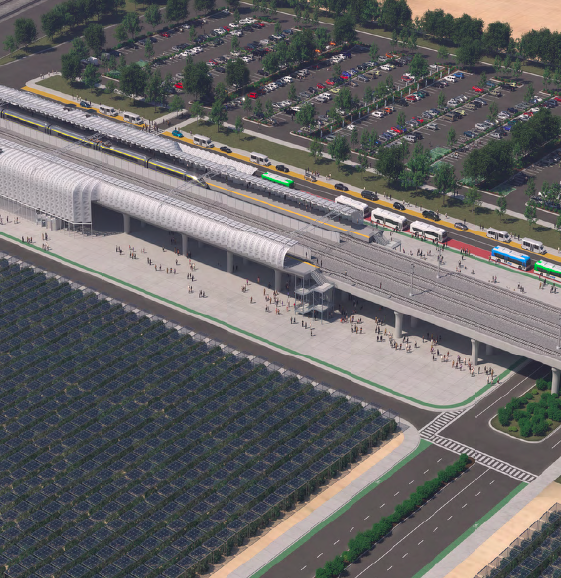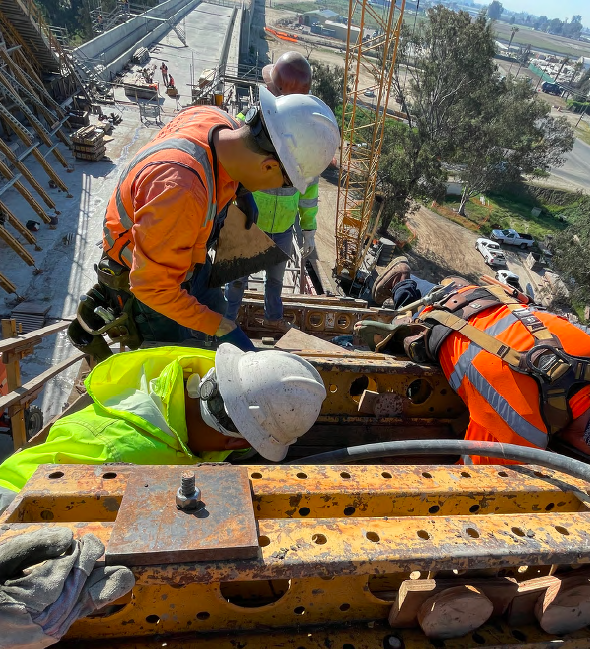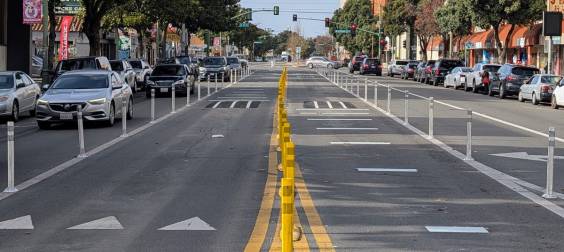Note: GJEL Accident Attorneys regularly sponsors coverage on Streetsblog San Francisco and Streetsblog California. Unless noted in the story, GJEL Accident Attorneys is not consulted for the content or editorial direction of the sponsored content.
The California High-Speed Rail Authority (CAHSRA) released its 2022 Sustainability Report [PDF], a 120-page compendium of all the ways the program has already contributed to the state's climate goals.
It is a solid catalog of achievements that the high-speed rail program has achieved so far: 119 miles of infrastructure, thousands of jobs created, now and in future; 700+ small business earning revenue; billions in benefits to disadvantaged communities; reduced reliance on fossil fuels by contractors; and use of offsets, which the report claims has given it a "net positive" environmental impact.
High-speed rail is the "backbone" of California's climate goals, says the report. Not only will it deliver carbon neutral travel options as soon as it starts operating, it is focused on reducing current emissions.
CAHSRA has helped restore natural habitats, protect agricultural land, and plant trees. It claims to have helped "avoid or sequester" more than 400K metric tons of carbon dioxide emissions. This seems to have been made possible in part through the purchase of offsets and from "progressive fleet procurement requirements." That is, the Authority is requiring contractors to use zero emission equipment on the project, although those requirements are being phased in over time.
The report says that its activities have already reduced "on- and off-road diesel fuel consumption ... by over two percent, while gasoline fuel consumption decreased by over fifty percent from 2020." This is not because construction slowed down, but because the construction work shifted from demolition-heavy work and the need for large excavators and hauling trucks decreased. When those are needed again in future construction phases, the Authority will require more of them to be zero-emission vehicles.
Of course, this report is written to highlight achievements, as well as defend against project detractors, of which there are plenty of loud ones. So naturally it takes a relentlessly positive tone. The controversy surrounding the use of offsets, for example, is not discussed.
In addition to the environmental and climate achievements it celebrates, the Sustainability Report also details the ways the program has generated billions in economic activity, much of that in disadvantaged communities, and supported small businesses.
The data covers 2021, and since trains are not running yet there is no climate benefit from reduced driving. But once the project opens its first segment, it will operate on 100 percent renewable energy, using solar power and track-side batteries on CAHSRA-owned property. Within the Central Valley, travel times for riders could be cut in half compared to driving. Similar travel time savings will also become available to other areas as segments come online in the future.
According to the report, CAHSRA is also involved with helping create compact development near its stations, where "daily needs are within walking or cycling distance" to help further reduce the need for driving. It includes renderings of some of the planning around existing rail stations - in San Jose and at Los Angeles Union Station.
"Our stations are future hubs of electrified transportation fueled by renewables," it reads. "They should be comfortable, shaded, energy and water-efficient destinations for customers and help restore the surrounding community."
But the "artist renderings" of planned Central Valley stations show something completely different. The cover, for example, is an illustration of the future Kings/Tulare station (see lead image). According to the report, the rendering "highlights how the station's design accommodates passengers arriving via low-carbon modes of transit, such as bus, rideshare and shuttle service, as well as via individual modes, such as bicycles or walking."
While there do seem to be some narrow green lanes along the very wide roads approaching the station, what dominates the illustration is a half-empty parking lot for cars, taking up a solid third of the image. And the other side of the station, there is what looks like a solar farm where "crops are covered by photovoltaic cells that generate solar power."
It must be true that some crops can be grown in the shade. But the whole thing looks a bit backwards. Why is there so much room so close to the station given over to storing cars? And why aren't those cars shaded by solar panels?
Maybe this particular station is not supposed to be urban - but all the Central Valley station renderings illustrate the opposite of what this report describes as "fifteen-minute cities" and "walkable, bikeable destinations." They are surrounded by parking, not "communities."
Disappointingly, it seems that even when contemplating the transportation of the future, planners just cannot envision something that is not dominated by personal vehicles.








